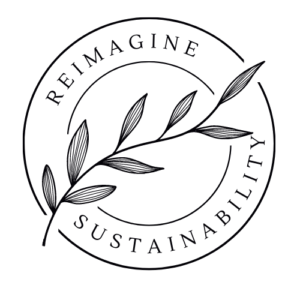With an increasing demand for sustainable products and services, more and more companies trumpet their green, clean and sustainable practices through different marketing strategies. Unfortunately, not all claims are trustworthy or honest. This phenomenon is called greenwashing. Greenwashing occurs when a company claims to be environmentally friendly, but it is simply not true. As consumers, we face the dilemma of supporting sustainable practices, but are deliberately misled by companies that only care about our money, not the environment.
In this article, I explain what greenwashing is in detail. Why is greenwashing a problem? What are some examples of greenwashing? Additionally, I want to show how you can detect greenwashing practices and how to avoid them.
What is greenwashing?
Greenwashing occurs when a company is marketing their products or services with false claims about its environmental friendliness. To put it simply, companies purposefully lie to us to increase their profit – without doing the work. Greenwashed marketing contains information that is misleading and outright false about the company’s environmental impacts. The underlying problem is to use marketing strategies for promoting services and products to be sustainable, but making no measurable efforts to fulfil the Sustainability claims.
Originally, the term greenwashing was created by the environmentalist Jay Westerveld in 1986. He used greenwashing in connection with false claims of the hotel industry that promoted the reuse of towels for environmental reasons. The hotel industry found it more important to save costs rather than to reduce their environmental impacts. The origin of words can be quite entertaining. I wouldn’t have guessed that the term greenwashing was derived from something as random as non-environmentally friendly towels.
Reimagine Sustainability Pinterest
Greenwashing synonym and other terms
Another term for greenwashing is green sheen. It is the same concept. A company makes little or no sustainable effort to minimise destructive environmental impacts, but spends time and money on deceptive green marketing.
A similar term to greenwashing is whitewashing. Whitewashing refers to glossing over scandalous and false information. It’s an intentional act by companies to hide misbehaviour, malpractice or other sorts of errors.
Greenwashing can also occur unintentionally. A company is unintentionally greenwashing when they have good intentions and believe in their sustainable practices, but their environmental efforts are not as effective or comprehensive. Environmental responsibility does not depend on good intentions, it depends on real information and real results.
The false impression still lingers and misleads the consumers. Fraud is fraud. False claims – intentional or unintentional – impede the results we need to see in the Sustainability space. Jumping on a trend like green marketing results in profound consequences for the environment and is damaging to the company’s public reputation.
In Sustainability, the social aspect is often overlooked and greenwashing is an example of this. In the social sphere, there is no established term, however, a few websites use the term social washing. This is used when genuine actions and positive social outcomes don’t align with the communicated aims.
Why is greenwashing a problem?
Nobody likes to be lied to, especially when we try to make better choices to cause less harm with our purchasing decisions. Money makes the world go round, so we want to use money to support good practices. Exploiting good intentions for profit should never be the marketing goal, especially in the 21st century. Capitalising on growing demand belongs to the past. We can do better than that.
Greenwashing can significantly harm a brand’s reputation. Contrary to some beliefs, some industries cannot claim to be sustainable. Some examples are oil, gas, mining, forestry, fashion, agriculture (monocultures, fuel and feed), livestock and fisheries. Don’t get me wrong, on a small scale with manageable impact regulations, it might be possible to become completely sustainable, but commercial and industrial practices – in particular mass production – can never be sustainable. Something will always be left behind and it’s usually environmental or social sustainability.
Related:
10 Simple Reasons Why It’s Not Too Late For Sustainability
Frequently used greenwashing labels are: recycled materials, energy-saving benefits, good for the environment, more natural, healthier, free of chemicals or less wasteful. Furthermore, greenwashing occurs when a company wants to distinguish itself from competitors. Rebranding can also lead to greenwashing practices when products or services are only renamed, rebranded, and repacked with new colours and slogans. This makes them appear more sustainable without any real effort.
Another indirect case of greenwashing happens in the supply chain of a company. The company’s practices may be fully sustainable, but its supply chain stakeholders might not be sustainable at all. The whole supply chain of a product or service needs to be taken into account and developed to be environmentally and socially responsible.
After a greenwashing scandal, it is very difficult to regain the customer’s trust. Like human relationships, once trust is broken it is difficult to restore it.
The 7 sins of greenwashing to avoid
Sin #1 Hidden trade-off
Environmental claims are problematic when they solve one issue but continue to contribute to another. The situation might not have changed at all, but the company uses the positive outcome to market their product or service even though substantial damage is caused.
Sin #2 No proof
True facts are indisputable when making claims about sustainable practices. Backing up one’s claims with factual evidence is non-negotiable in avoiding greenwashing.
Sin #3 Vagueness
Vague claims are meaningless and useless. Simply using buzzwords such as sustainable, green, healthy, recycled etc. without a specific explanation reduces the credibility of those claims.
Sin #4 Worshipping false labels
Creating labels without a strong scientific background is misleading and unethical. Without a proven and legitimate screening process, fake certifications exploit the customer’s trust.
Sin #5 Irrelevance
Some environmental claims of a service or product can be irrelevant. It gives the impression that it is better than other products but it’s not fulfilling its claims at all.
Sin #6 Lesser of two evils
In the race of competition, alternative products or services with no environmental benefits are developed. Nonetheless, companies still attach environmental benefits to them without any real sustainable added value.
Sin #7 Fibbing
Using environmental claims that are thoroughly false is the most obvious greenwashing example to avoid.
Greenwashing scandals: More illusion than reality
Companies which should have known better
There are umpteen examples of greenwashing scandals. The bigger and more well-known the company, the easier it is to detect greenwashing practices.
H&M: The fashion industry doesn’t get enough attention for its immense negative environmental and social impacts. This might not be surprising, but more than 95% of H&M’s sustainability claims were not fulfilled.
Coca-Cola: My favourite example of using the colour green to appear healthier and more sustainable. The sugar-reduced Coke Life targets health-conscious consumers who are concerned about sugar consumption. Unfortunately, switching sugar with stevia is not health. The reduced amount of sugar does not create the health benefits it appears to have.
IKEA: Timber is a renewable resource and IKEA is its biggest consumer. It may not come as a surprise that some of IKEA’s products are made from illegally sourced wood. Even worse, the timber was certified by the Forest Stewardship Council whose job is to promote responsible management of the world’s forests.
Shell: One appalling example of greenwashing is Shell’s audacity in asking the public via a Twitter poll: What are you willing to change to help reduce emissions? It’s only one of the many greenwash initiatives Shell has contributed to, but it’s by far the most hypocritical one. Other claims like funds for the restoration of ecosystems serve as diversionary tactics which gloss over their shady projects. A sustainable future doesn’t run on oil and gas.
Big corporations get away with scandalous behaviour as they have the capital and assets to do so. It’s not surprising that these companies want to react to the increasing interest in and demand for more sustainable products. Nonetheless, the majority of our world’s crisis burden is on the shoulders of those companies who care more about what is in our pockets than our well-being.
How to avoid greenwashing?
There are many tips and tricks to avoid greenwashing. My favourite tip is one word: Genuity. If your product or service is not sustainable, do not try to make it greener. No green words, no natural design and no false claims. Sustainability needs genuine actions and real results. If you want to avoid greenwashing, be certain about your actions and claims – from start to finish. No exemptions, pure Genuity.
Be honest about your brand’s sustainability practices and its whole supply chain. Communicate what is working well but also point out what is not working well. People prefer to know the truth when they make deliberate decisions. You will never achieve 100% sustainability. Sustainability is a process that takes forever and is constantly evolving.
Transparency is crucial; use social media to document your sustainability journey. It will show the raw side, the ups and downs. No one thinks that Sustainability is easy (except me probably). Flaws are normal and they can be fixed. Communicating your efforts via social media can bring you valuable feedback. You might not have the solution yet, but someone in the world might have exactly what you need.
Be clear and genuine with your claims
Another tip is to make your sustainability claims as clear and easy to understand as possible – no fluffy language. Our world’s complexity is derived from poor management over many decades. Sustainability doesn’t have to be complicated, thus using appropriate, positive and inspiring words will distinguish you from others. Pictures are also useful to communicate your efforts, but make sure not to use misleading images. An example of misleading packaging are milk cartons featuring happy cows, when in reality, those cows are crammed together in a small space in a shed.
Related:
The Power of Words: Why We Should Change The Way We Talk About Sustainability
An awesome example I came across to describe good practice is: Compare apples to apples. With this tip, you can avoid greenwashing. Only communicate what you can offer and what the product or service entails. It is also helpful to back up your sustainability claims with real data. Regularly update your information. Ensure compliance with standards and regulations and only use verifiable facts. If applicable, attain credible third-data certification.
Credibility. Be genuine, it shouldn’t be too difficult, right?





Green washing is so infuriating! On a positive note, I really think consumers are waking up to this issue and seeing past the sneaky marketing (i work in marketing so I think I can say this, lol!)